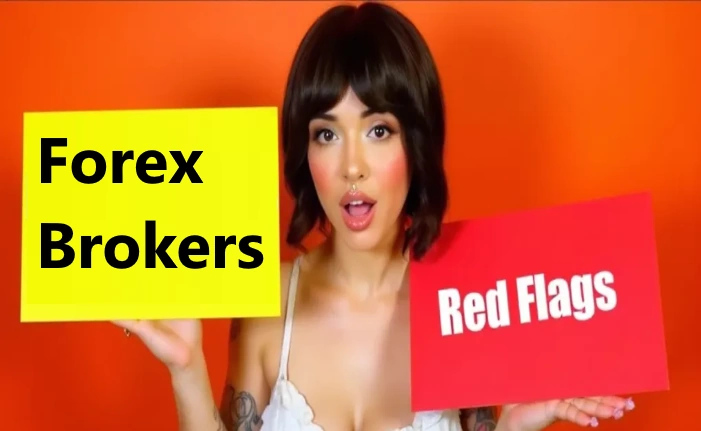5 Red Flags to Spot a Dangerous Unverified Forex Broker
Forex trading is a land of golden opportunities, where savvy gunslingers can lasso in fat returns. But just like the Wild West of old, this digital domain also harbors its fair share of varmints–cunning tricksters disguised as brokers, just waiting to pillage your hard-earned cash. In the world of finance, choosing the right broker is crucial for the success of your investments. However, with the rise of unverified brokers, it has become increasingly difficult to distinguish between legitimate and fraudulent brokers.

Don’t worry, tenderfoot! This isn’t a one-way trip to financial oblivion. Today, we’re going to equip you with the keenest eyes and fastest reflexes in the market, teaching’ you how to spot a dangerous, unverified broker faster than a rattlesnake in a saloon! So, saddle up, tighten your metaphorical Stetson, and prepare for a rooting’ tooting’ good read packed with valuable nuggets of financial wisdom.
Lack of Regulation
The first and most important red flag to look out for is the lack of regulation. Legitimate brokers are regulated by financial authorities, such as the Securities and Exchange Commission (SEC) or the Financial Conduct Authority (FCA). If a broker is not regulated, it is a clear sign that they are not legitimate and should be avoided.
High-Pressure Sales Tactics
Another red flag to look out for is high-pressure sales tactics. Legitimate brokers do not pressure their clients into making investments. If a broker is using high-pressure sales tactics, it is a clear sign that they are not concerned about your best interests and are only interested in making a quick buck.
Lack of Transparency
Transparency is crucial for choosing a forex broker. If a broker is not transparent about their fees, commissions, and other charges, it is a clear sign that they are hiding something. Legitimate brokers are transparent about their costs and are happy to answer questions you may have.
Poor Online Reputation
Before choosing a broker, it is important to do your research and check their online reputation. A quick Google search can reveal a lot about a broker. If a broker has a poor online reputation, it is a clear sign that they are not trustworthy and should be avoided.
Be cautious of brokers with:
- Few or no online reviews: A legitimate broker will have a track record of satisfied customers.
- Mostly negative reviews or complaints: Heed the warnings of others who’ve been down this dusty trail.
- Suspicious or generic positive reviews that seem fake: Don’t be fooled by online smoke and mirrors.
Lack of Security Measures
Finally, a lack of security measures is a major red flag. Legitimate brokers take the security of their clients’ information and funds seriously. If a broker does not have adequate security measures in place, it is a clear sign that they are not legitimate and should be avoided.
Lack a physical address
Remember that dusty saloon with the swinging doors? Imagine a broker who operates like the bartender who’s never there, leaving you with an empty glass and a growing sense of unease. That’s the feeling you get when a broker lacks a physical address or verifiable contacts. Here’s why it’s a major red flag:
- Transparency is key: A legitimate broker welcomes communication and interaction. They should have a clear and easily accessible physical address, phone number, and email address. Dodgy dealings often happen in the shadows, so if they’re hiding their contact information, it’s time to hightail it out of Dodge.
- Accountability matters: If something goes wrong, you need to know where to turn. A physical address allows you to send them official documentation or visit them in person if necessary. Verifiable contacts ensure you can reach them quickly and easily to address any concerns.
- Building trust is essential: Think about it. Would you trust a stranger in a dark alley offering you a “sure-fire” investment opportunity? Of course not! The lack of a physical presence and verifiable contacts makes it difficult to build trust and raises serious questions about their legitimacy.
Here are some additional tips to check for missing information:
- Look for a “Contact Us” page on their website: It should be clear, easy to find, and provide multiple contact options.
- Check for business registration information: Legitimate forex brokers should be registered with relevant financial authorities. You can usually find this information on their website or through official government databases.
- Search online reviews and complaints: See if other users have had trouble contacting the broker or getting their questions answered.
Hidden Fees
These sly foxes bury sneaky charges deep within their contracts, leaving you feeling like you just got rustled by a whole posse of bandits. Beware of brokers with:
- Unclear or excessive trading fees: Compare fees across different brokers before committing.
- Hidden account maintenance or withdrawal charges: Ask for a complete fee breakdown upfront.
- Bonuses or promotions with complex or restrictive terms: Read the fine print carefully before taking the bait.
Poor Customer Service
Finally, poor customer service is a red flag to watch out for. If a broker is difficult to reach or unresponsive to your queries, it’s a clear sign that they are not interested in providing you with good service. Always choose a broker that has a good reputation for customer service.
The Bottom Line
In conclusion, choosing the right broker is crucial for the success of your investments. However, with the rise of unverified brokers, it has become increasingly difficult to distinguish between legitimate and fraudulent brokers. By looking out for these 5 red flags, you can protect your investments and ensure that your money is in safe hands.
Remember, if a broker is not regulated, uses high-pressure sales tactics, lacks transparency, has a poor online reputation, and lacks security measures, it is a clear sign that they are not legitimate and should be avoided.

